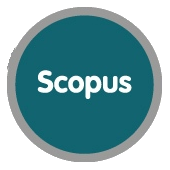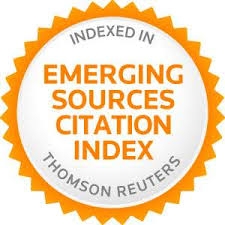Estilos de aprendizaje en estudiantes universitarios y enseñanza centrada en el aprendizaje
Resumen
Palabras clave
Referencias
Armbruster, P., Patel, M., Johnson, E. & Weiss, M. (2009). Active learning and student-centered pedagogy improve student attitudes and performance in introductory biology. Education, 8, 203-213. doi: https://doi.org/10.1187/cbe.09-03-0025
Barr, R.B. & Tagg, J. (1995). From Teaching to Learning. A New Paradigm for Undergraduate Education. Change, 27 (6), 13-25. doi: https://doi.org/10.1080/00091383.1995.10544672
Biggs, J. (2005). Calidad del aprendizaje universitario. Madrid: Narcea.
Brackin, M. (2012). Two-Year College Faculty and Administrator Thoughts about the Transition to a Learning-Centered College. Community College Journal of Research and Practice, 36(3), 179-190. doi: https://doi.org/10.1080/10668920802708561
Bruehl, M., Pan, D. & Ferrer-Vinent, J. (2014). Desmystifying the chemistry literature: building information literacy in first-year chemistry students trough student-centered learning and experiment design. Journal of Chemical Education, 92, 52-57. doi: https://doi.org/10.1021/ed500412z
Campbell, C. (2012). Learning-Centered Grading Practices. Leadership, 41(5), 30-33.
Chen, J., Zhou, J., Sun, L., Wu, Q., Lu, H. & Tian, J. (2015). A new approach for laboratory exercise of pathophysiology in China based on student-centered learning. Advances in Physiology Education, 39, 116-119. doi: https://doi.org/10.1152/advan.00143.2014
Cohen, J. (1988). Statistical power analysis for the behavioral sciences (2nd ed.). Hillsdale, NJ: Lawrence Erlbaum Associates.
Entwistle, N. & McCune, V. (2004). The Conceptual Bases of Study Strategies Inventory. Educational Psychology Review, 16(4), 325-345. doi: https://doi.org/10.1007/s10648-004-0003-0
Fritz, C. O. & Morris, P. E. (2012) Effect Size Estimates: Current Use, Calculation, and Interpretation. Journal of Experimental Psychology: General. 141:1, pp. 2-18. doi: https://doi.org/10.1037/a0024338
Gow, L. & Kember, D. (1993). Conceptions of teaching and their relationship to student learning, British Journal of Educational Psychology, 63, 20-33. doi: https://doi.org/10.1111/j.2044-8279.1993.tb01039.x
Hannafin, M. (2012). Student-Centered Learning. En N.M. Seel (Ed.), Encyclopedia of the Sciences of Learning (pp. 3211-3214). Nueva York: Springer. Available fromhttp://link.springer.com/content/pdf/bfm%3A978-1-4419-1428-6%2F1.pdf
Hernández, R. (2012). Does continuous assessment in higher education support student learning? Higher Education, 64, 489-502. doi: https://doi.org/10.1007/s10734-012-9506-7
Hunting, L. & Chalmers, D. (Eds.) (2012). University teaching in focus. A learning-centred approach. Londres: Routledge.
Kember, D. (2009). Promoting student-centred forms of learning across an entire university. Higher Education, 58, 1-13. doi: https://doi.org/10.1007/s10734-008-9177-6
Kolb, D. (1976). The Learning Style Inventory: Technical Manual. Boston: McBer and Company.
Koles, P., Nelson, S., Stolfi, A., Parmelee, D. & DeStephen, D. (2005). Active learning in a Year 2 pathology curriculum. Medical Education, 39, 1045-1055. doi: https://doi.org/10.1111/j.1365-2929.2005.02248.x
Lucieer, S.M., Van der Geest, J.N., Elói-Santos, S.M., Delbone de Faria, R.M., Jonker, L., Visscher, Ch., Rikers; R.M.J.P. & Themmen, A.P.N. (2016). The development of self-regulated learning during the pre-clinical stage of medical school: a comparison between a lecture-based and a problem-based curriculum. Advances in Health Sociences Education, 21, 93-104. doi: https://doi.org/10.1007/s10459-015-9613-1
Marambe, K.N., Vermunt, J.D. & Boshuizen, P. A. (2012). A cross-cultural comparison of student learning patterns in higher education. Higher Education, 64, 299-316. doi: https://doi.org/10.1007/s10734-011-9494-z
Martin, E. & Ramsden, P. (1992). An expanding awareness: how lecturers change their understanding of teaching. En M.S. Parer (Ed.), Research and Development in Higher Education, Vol. 15 (pp. 148-155). Sidney: HERDSA.
McLean, M. &Gibbs, T. (2010). Twelve tipos to designing and implementing a learner-centred curriculum: Prevention is better than cure. Medical Teacher, 32, 225-230. doi: https://doi.org/10.3109/01421591003621663
Menacherry, E.P., Wright, S.M., Howell, E.E. & Knight, A.M. (2008). Physician-teacher characteristics associated with learner-centered teaching skills. Medical Teacher, 30(5), e137-e144. doi: https://doi.org/10.1080/01421590801942094
Mostrom, A. & Blumberg, P. (2012). Does Learning-Centered Teaching Promote Grade Improvement? Innovative Higher Education, 37(5), 397-405. doi: https://doi.org/10.1007/s10755-012-9216-1
Nitza, D. (2013). Learning-centered teaching and backward course design-From transferring knowledge to teaching skills. Journal of International Research, 9(4), 329-338
Prieto, L. (coord.) (2008). La enseñanza universitaria centrada en el aprendizaje. Barcelona: Octaedro.
Roy, E.B. & McMahon, G.T. (2012). Video-based cases disrupt Deep critical thinking in problem-based learning. Medical Education, 46, 426-435. doi: https://doi.org/10.1111/j.1365-2923.2011.04197.x
Samuelowicz, K. & Bain, J.D. (1992). Conceptions of teaching held by academic teachers. Higher Education, 22, 229-249. doi: https://doi.org/10.1007/BF00138620
Samuelowicz, K. & Bain, J.D. (2001). Revisiting academics’ beliefs about teaching and learning, Higher Education, 41, 299-325. doi: https://doi.org/10.1023/A:1004130031247
Schmeck, R.R. (1982a). Learning style of college students. In R. Dillon & R.R. Schmeck, Individual differences in cognition, Vol. I, (pp. 233-279). New York: Academic Press.
Schmeck, R.R. (1982b). Learning strategies and learning styles. New York: Plenum Press.
Schweisfurth, M. (2015). Learner-centred pedagogy: Towards a post-2015 agenda for teaching and learning. International Journal of Educational Development, 40, 259-266. doi: https://doi.org/10.1016/j.ijedudev.2014.10.011
Sue, T. (2014). Student-Centred Learning: A Humanist Perspective. Teaching in Higher Education, 19(3), 266-275. doi: https://doi.org/10.1080/13562517.2013.860099
Tagg, J. (2003). The learning paradigm college. Bolton, Massachusetts: Anker Publishing Company, Inc.
Tessier, J. (2007). Small-group peer teaching in an introductory biology classroom. Journal of College Science Teaching 36(4), 64-69.
Tien, L.T., Roth, V. & Kampmeier, J.A. (2002). Implementation of a peer-led team learning instructional approach in an undergraduate organic chemistry course. Journal of Research in Science Teaching 39 (7), 606-632. doi: https://doi.org/10.1002/tea.10038
Vermunt, J.D. (1994). Inventory of Learning Styles (ILS) in Higher Eduction. The Nederlands: Tilburg University, Department of Educational Psychology.
Vermunt, J.D. (1996). Metacognitive, cognitive and affective aspects of learning styles and strategies: A phenomenographic analysis. Higher Education, 31, 25-50. doi: https://doi.org/10.1007/BF00129106
Vermunt, J. D. (1998). The regulation of constructive learning processes. British Journal of Educational Psychology, 68, 149-171. doi: https://doi.org/10.1111/j.2044-8279.1998.tb01281.x
Vermunt, J.D. (2005). Relations between student learning patterns and personal and contextual factors and academic performance. Higher Education, 49, 205-234. doi: https://doi.org/10.1007/s10734-004-6664-2
Vermunt, J.D. & Vermetten, Y.J. (2004). Patterns in Student Learning: Relationships Between Learning Strategies, Conceptions on Learning, and Learning Orientations. Educational Psychology Review, 16(4), 359-384. doi: https://doi.org/10.1007/s10648-004-0005-y
Zabalza, M.A. (2012). Metodología docente. REDU (Revista de Docencia Universitaria, 9(3), 75-98.
Enlaces refback
- No hay ningún enlace refback.


